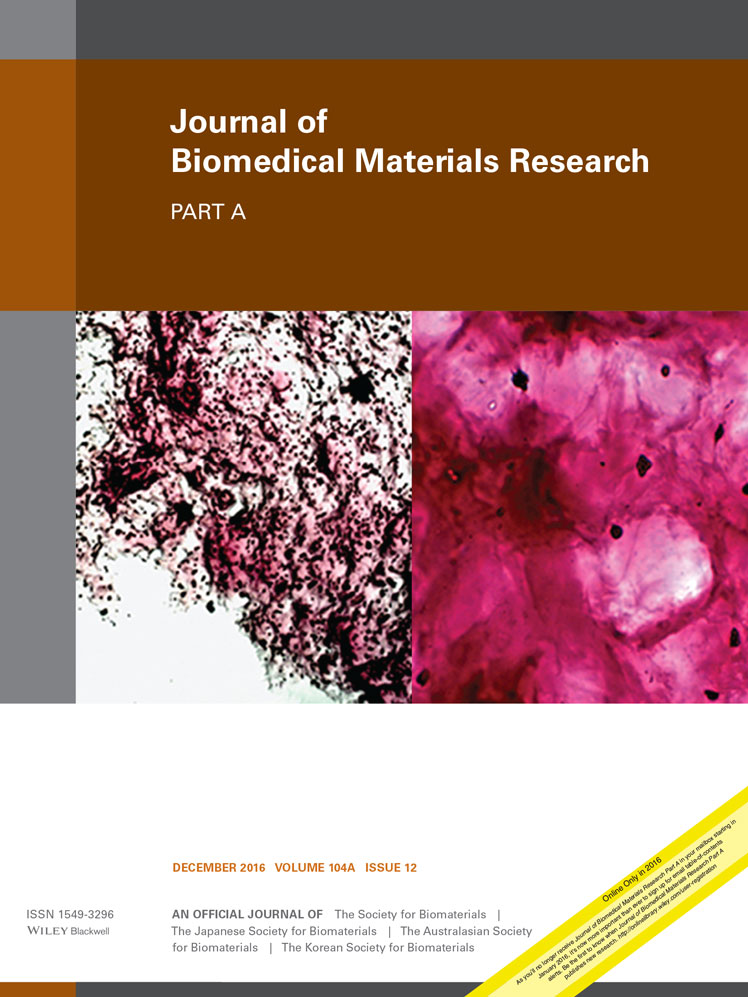Release of transgenic progranulin from a living hyaline cartilage graft model: An in vitro evaluation on anti-inflammation
Abstract
Osteoarthritis (OA) is a prevalent condition that compromises and even jeopardizes the life quality of millions of people. Common symptoms in OA includes joint stiffness and soreness, and they are often associated with inflammations to various extend. Due to the avascular and aneural nature of articular hyaline cartilage, it has limited self-repair capabilities; especially under inflammatory conditions, damages inflicted on cartilage are often irreversible. Hence, treatment approaches focus on anti-inflammation or articular cartilage replacement. In this study, an engineered, dual-functional living hyaline cartilage graft (LhCG), capable of releasing transgenic anti-inflammatory cytokine-progranulin (PGRN) is developed and envisioned to simultaneously fulfil both requirements. The therapeutic functionality of PGRN releasing LhCG is evaluated by co-culturing the constructs with tumor necrosis factor-alpha (TNFα) secreting THP-1 cells to simulate the inflammatory condition in arthritis. Non-transgenic LhCG constructs and non-coculture sample groups were set up as controls. Gene expression and ECM composition changes across samples were assessed to understand the effects of PGRN as well as inflammatory environment on the cartilage graft. Collectively, the results in this study suggest that in situ release of transgenic recombinant PGRN protects LhCG from induced inflammation in vitro; contrastively, in the absence of PGRN, cartilage grafts are at risk of being degraded and mineralized under exposure to TNFα signaling. This shows that cartilage graft itself can be at risk of degradation or calcification when implanted in arthritic microenvironment. Hence, the inflammatory microenvironment has to be considered in cartilage replacement therapy to increase chances of successful joint mobility restoration. © 2016 Wiley Periodicals, Inc. J Biomed Mater Res Part A: 104A: 2968–2977, 2016.




